My Science Scholar Alex developed a lovely kaggle notebook to replicate the pork chop plot for a 2005 Earth-Mars launch window:

My Science Scholar Alex developed a lovely kaggle notebook to replicate the pork chop plot for a 2005 Earth-Mars launch window:

This is an excerpt of an email I sent (12 December 2022) to representatives of the New Zealand Space Agency, which is a part of New Zealand’s Ministry of Business, Innovation and Employment. This was to highlight the areas in which I have active research or see potential areas of research overlap with NASA. This summary was prompted by the then interest in supporting NZ-NASA collaborative research. The following list of projects is, of course, not a complete list of NZ-NASA projects or linkages — it is only a list of projects in which I am involved or of which I know. MBIE funding to support NZ research involving NASA must find alignment with the Aotearoa New Zealand Aerospace Strategy. I have, where possible, shown where that alignment can be made.
The research collaboration arrangement between NASA and MBIE was solidified in 2023 around a limited range of research, those of “of natural hazards, water and climate modelling, environmental monitoring, and biodiversity”. The funding was provided via MBIE’s Catalyst: Strategic — New Zealand — NASA Research Partnerships 2023. Regrettably, none of my research areas I list below have strong resonance with these selected topics.
EXCERPT BEGINS (date of writing 9 December 2022)
The Nancy Grace Roman Space Telescope (NGRST, formerly WFIRST)
The Roman telescope will be the first space telescope dedicated to the use of gravitational microlensing for the discovery of extra-solar planets. New Zealand researchers have been active in this field for over 25 years. Members of the NZ-Japan-US Microlensing Observations in Astrophysics (MOA) collaboration are also involved with the NGRST microlensing programme. Principal among these is Professor David Bennet (NASA/GFSC). I have been working with Dave for as long as I have been a member of MOA, which is now over 20 years. Regrettably, this research finds resonance with none of the goals in the Aotearoa New Zealand Aerospace Strategy. However, one might argue that supporting New Zealand’s engagement with such a high profile NASA mission would support MBIE’s aim of [g]rowing an innovative and inclusive space sector. On that website, take a look at the evocative and inspirational image of the young person using a telescope. Imagine upgrading it with an image comprising NZers engaging in research with NASA’s flagship Nancy Grace Roman Space Telescope!
NASA CLEoPATRA
I am funded through a grant to Dr Rich Barry (NASA/GFSC) to perform preparatory simulation work for the Contemporaneous LEnsing Parallax and Autonomous TRansient Assay (CLEoPATRA) space mission concept. CLEoPATRA is designed to provide variable-baseline simultaneous microlensing parallax measurements for NASA’s flagship Roman Space Telescope mission and for terrestrial telescopes.
Free-space optical communications
The MBIE-DLR Catalyst grant for FSOC which I am leading is making progress. Advisers to the Australian Optical Communications Ground Station Network Working Group — of which we are a part — include Ed Kruzins, who works for the CSIRO NASA Operations & Canberra Deep Space Communication Complex (the Deep Space Network). NASA conducts research into optical communications for deep space exploration, and this is an area into which New Zealand could expand, in conjunction with NASA. An interesting opportunity exists in which the Warkworth 30m radio dish could be teamed with an optical communication terminal to conduct hybrid communication experiments with NASA spacecraft. I had a recent discussion with Robin McNeill (Space Operations New Zealand) about the prospects of using Warkworth as part of an expanded DSN. This work matches Strategy Goal 4: Actively support a permanent human presence in space.
Space Situational Awareness
One area in which our optical communication research could be expanded is into the optical imaging of space assets and debris. Steve Weddell and his team at UC are active in this area. As part of my FSOC work, I am aiming to develop infrastructure to mirror the capability that the DTA has for tracking space craft. This work would naturally service the need of SSA orbit determination and trajectory analysis, but it would also provide valuable information for those of us interested in quantifying the effect of satellites on the night sky — work on which I am involved along with Dr Michele Bannister, UC. The optical tracking of space assets and debris is an active area of research at NASA. Research into making and using optical observations of space debris and assets resonates strongly with Goal 3: At the forefront of global sustainable space activities.
Planetary Defence and Space Weather
Michele Bannister (UC) and Craig Rodger (UO) conduct research into the space environment. Michele has projects into environmental degradation, and Craig researches space weather. Both of these are areas in which NASA is active. I note that Michele most recently was involved in using the MOA 1.8m telescope to attempt observations of the NASA DART mission, following its impact into the asteroid Diamorphos, as part of its planetary defence programme. I would argue that Goal 4: Actively support a permanent human presence in space, encompasses this class of research, which supports the continued human presence in space as inhabitants of planet Earth in the face of astrophysical hazards.
Mars Surface research
Professor Kathy Campbell has engaged with NASA in relation to the choice of landing sites for Mars surface sample return missions. Kathy and I are part of the Executive Team of Te Ao Mārama Centre for Fundamental Inquiry. At our recent workshop, we discussed the prospect of developing links with NASA in astrobiology research.
Balloon Projects
A cheap and fast route to space is via balloon launches. NASA’s Scientific Balloon Program has been active for years in New Zealand. I would be very keen to see links developed with the Program, as this would be a means by which New Zealand could engage with space projects at lower cost, and with shorter timeframes than through orbital space missions.
NASA’s Small Satellite Mission Directorate
In the past I have spoken with Christopher E. Baker (Small Spacecraft Technology Program Executive within the Space Technology Mission Directorate) about New Zealand working with NASA on small satellite development.
This is a successful decoding of an optical beacon containing a satellite licence plate identifier.
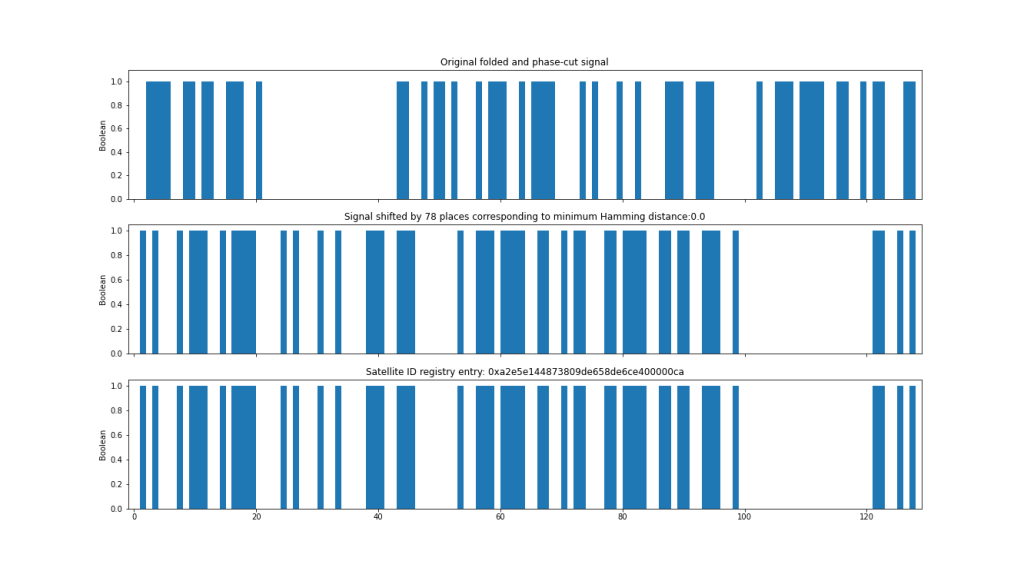
I am doing a little work in microlensing parallax between two observatories. First step: replicate others’ work! Here is my attempt to replicate Figure 1 of Henderson & Shvartzvald (2016).

And here is Figure 2:
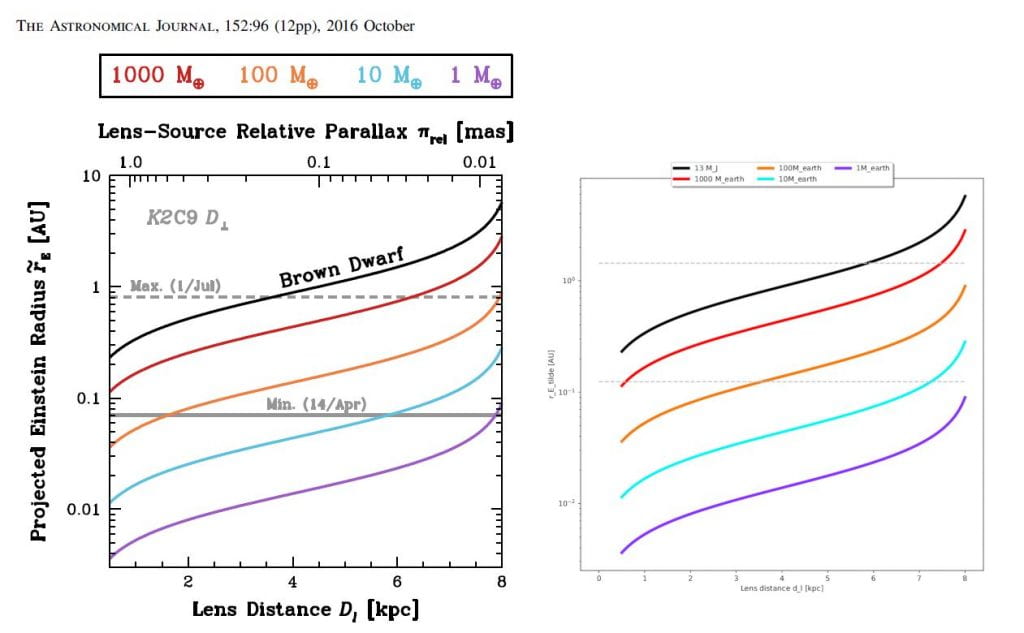
Figure 3:
Here is a scatter plot of mu_rel for $D_l = 1$kpc and $D_s = 8.2$ kpc, with the bulge velocity distribution used for the lens:
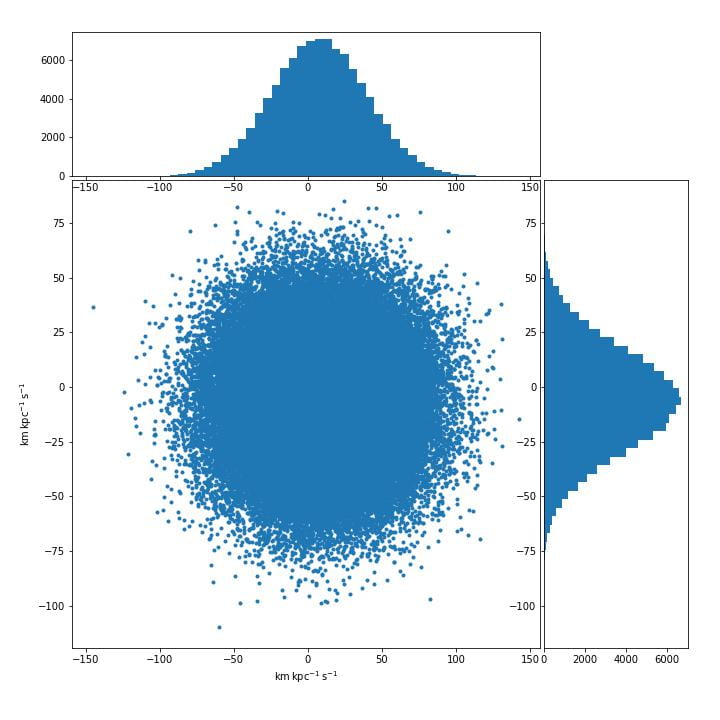
Animation of the positions of Earth and Kepler, in 2022, projected onto the observer plane, pointing towards a source at the centre of the K2 superstamp:
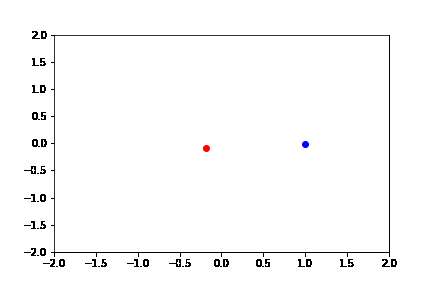
Plot of theta for Kepler-Earth, over a year:

Using the same assumptions as H&S, here is their Figure 3 replicated:

Here is some work going beyond H&S Figure 3, using the samples from the actual observer ephemerides along with the Galactic model draws:
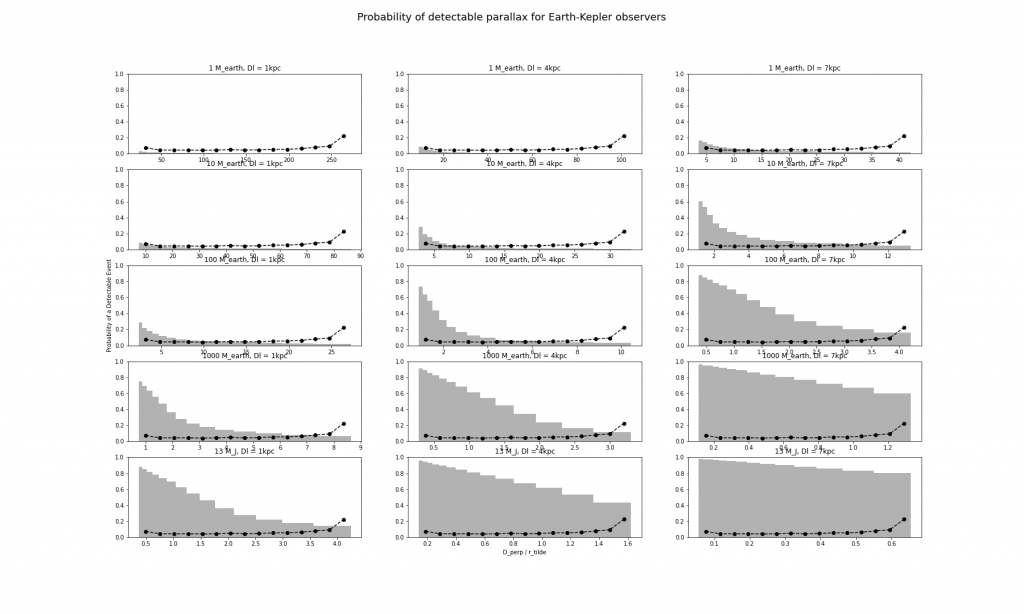

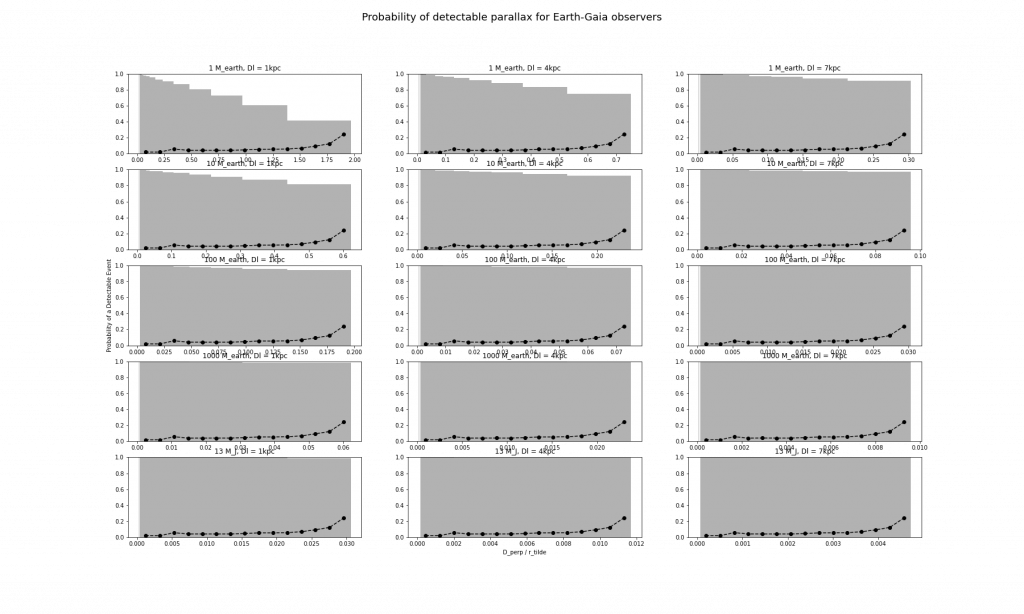
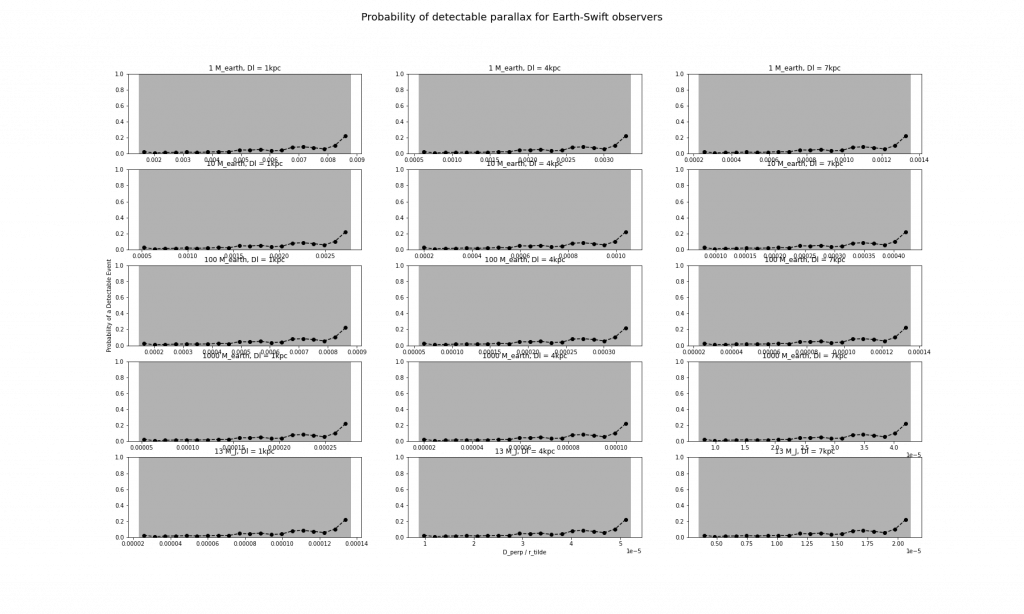
Here is Figure 4 replicated:

Here is Figure 6 replicated:

Here is a first attempt at characterising the type of lenses that Cleopatra will be sensitive to:
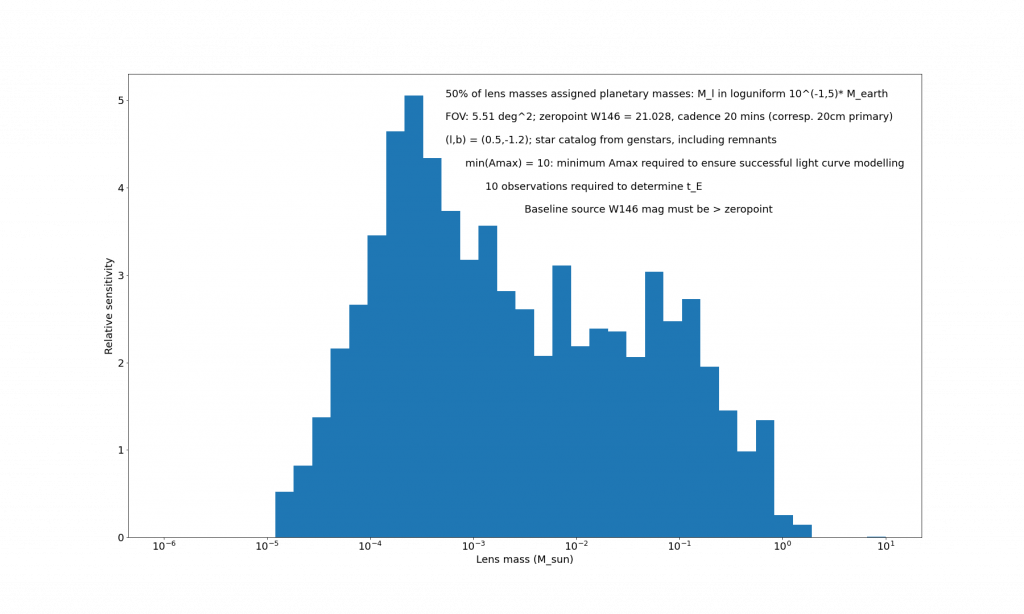
Here is a final set of relative sensitivity histograms for a 20cm and a 50cm primary mirror, for two different values of d_perp, two different min(Amax) values and two choices of minimum sampling:

The University’s first CubeSat mission is scheduled to fly late 2018. We have a ground station on top of the Physics building to communicate with satellites. This station requires final calibration and testing, and development of corresponding control and analysis software. This work will be done in conjunction with the Auckland Programme for Space Systems, using the new APSS laboratories on Symonds Street and the Department of Physics Electronics Laboratory. You will be working with students and staff in the Faculty of Engineering, as well as in the Faculty of Science. You will also assist in the preparation to communicate with the first APSS satellite mission via the Defence Technology Agency’s ground station, working with DTA staff to ensure a smooth connection between the DTA systems and the University network.
This will be of interest to you if:
This will be of interest to you if:
This will be of interest to you if:
Intermediate mass black holes are theorised to exist in our Galaxy. They are difficult to detect, however. One channel for discovery is by looking for tidal disruption flares (TDFs), wherein a companion to a black hole is disrupted the the gravitational distortion of the BH and emits bursts of radiation. These transient events are highly energetic, but emit most of the radiation in the UV, making ground-based observations only sensitive to the brightest events. This project will be to design a small satellite to make UV observations from space, in order to detect fainter TDFs. You will be working with colleagues at The University of Warsaw.
This will be of interest to you if:
One of the Department’s 40 cm Meade telescopes has been converted into a seeing monitor. Seeing is a measure of atmospheric turbulence. This project will involve the student making seeing observations at various sites in the Greater Auckland area, analysing the results and publishing these. The student will have to be comfortable working at night, and have a full driver’s licence. You will make seeing measurements using the dedicated software written for the instrument, as well as a commercial seeing analysis package and compare the results.
This will be of interest to you if:
This project will require the student to investigate multidimensional astronomical datasets using an Oculus Rift. Students should have a high level of programming ability. You will be using the iViz visualisation software from Virtualitics (no experience necessary).
This will be of interest to you if:
Here’s my list of Honours projects for 2017. If you are keen to do one of these, please email me or drop by to discuss.
1. Construct a Satellite Ground Station
In 2018, the University will start to launch CubeSats into low earth orbit. We will need a ground station to communicate with our satellites. The project will require the student to construct an antenna system comprising a software defined radio, corresponding control and analysis software, and display the information in a suitable format. This work will be done in conjunction with the Auckland Programme for Space Systems, using the new APSS laboratories on Symonds Street and the Department of Physics Electronics Laboratory.
2. Get into Machine Learning and classify Supernovae (in conjunction with JJ Eldridge)
This project will involve training a machine learning algorithm to classify standard supernovae lightcurves. The work will then be to see how the classifier copes with rarer, non-standard supernovae light curves, adapting the learning algorithm to correctly classify these non-standard curves as well. This work could then be extended to be part of the Transient and Variable Survey work of the Large Synoptic Survey Telescope (LSST), making predictions on how well the LSST will discover these rarer supernovae light curves.
3. Astronomical Seeing Measurements in the Greater Auckland Area.
One of the Department’s 40 cm Meade telescopes has been converted into a seeing monitor. Seeing is a measure of atmospheric turbulence. This project will involve the student making seeing observations at various sites in the Greater Auckland area, analysing the results and publishing these. The student will have to be comfortable working at night, and have a full driver’s licence.
4. Multidimensional Dataset Visualisation with an Oculus Rift
This project will require the student to investigate the software available for displaying multidimensional datasets using an Oculus Rift. The key objectives are to have a suite of software tools available to allow a user to navigate complex multidimensional data via virtual reality immersion. Students should have a high level of programming ability.
5. Detecting Atmospheric Meteor trails
Meteors entering the Earth’s atmosphere leave a trail of ionised particles. We have a software-defined radio system set up to detect radio signals from Christchurch which are forward-scattered off these trails. This system is working successfully, but can be improved upon. The honours project will comprise optimising the system to improve the number of detected meteor trails, to compile statistics of this year’s meteor showers and report them to the International Meteor Organisation. The project would also comprise making the observed data available via the Internet in real-time.
6. Design a CubeSat to perform Synthetic Aperture Radar measurements
With the Auckland Programme for Space Systems starting here at the University of Auckland, we are beginning to think about how New Zealand can benefit from utilising space. This project will be to design a synthetic aperture radar system that can be carried on a CubeSat (a 10x10x10 cm) satellite. Careful attention will need to be paid to power budgets, communication bandwidth budget and of course mass and volume budgets. Some experience in electronics would be an advantage.
Gravitational microlensing is a method for discovering extra-solar planets. It is different to other techniques in that it is sensitive to planets in orbits around their host star where scientists think planets form most readily. In a recent work, Daisuke Suzuki of the Japan/New Zealand MOA collaboration announced that the most likely mass of such planets is about that of Neptune. The story was picked up by the New Zealand Herald today.

This graph plots 4,769 exoplanets and planet candidates according to their masses and relative distances from the snow line, the point where water and other materials freeze solid (vertical cyan line). Gravitational microlensing is particularly sensitive to planets in this region. Planets are shaded according to the discovery technique listed at right. Masses for unconfirmed planetary candidates from NASA’s Kepler mission are calculated based on their sizes. For comparison, the graph also includes the planets of our solar system.
Credit: NASA’s Goddard Space Flight Center
To reach this conclusion, Suzuki and his co-authors analysed a set of microlensing planets that have already been discovered, conducting a statistical analysis to infer the most likely planet mass of these cold planets. One of the planets included in the planet which I announced in Monthly Notices last year. The discovery and announcement of these planets power the sort of statistical analyses like that of the Suzuki et al result.

Neptune-mass exoplanets like the one shown in this artist’s rendering may be the most common in the icy regions of planetary systems. Beyond a certain distance from a young star, water and other substances remain frozen, leading to an abundant population of icy objects that can collide and form the cores of new planets. In the foreground, an icy body left over from this period drifts past the planet.
Credit: NASA’s Goddard Space Flight Center/Francis Reddy
Story: https://www.nasa.gov/feature/goddard/2016/most-common-outer-planets-likely-neptune-mass
Paper: http://iopscience.iop.org/article/10.3847/1538-4357/833/2/145
arXiv version of paper: http://adsabs.harvard.edu/abs/2016arXiv161203939S
Additional graphics: http://svs.gsfc.nasa.gov/cgi-bin/details.cgi?aid=12425
Video on YouTube: https://youtu.be/qzlR3kBCLYM
From the press release from the Space Science Telescope Institute:
Astronomers using NASA’s Hubble Space Telescope, and a trick of nature, have confirmed the existence of a planet orbiting two stars in the system OGLE-2007-BLG-349, located 8,000 light-years away towards the center of our galaxy.
The planet orbits roughly 300 million miles from the stellar duo, about the distance from the asteroid belt to our sun. It completes an orbit around both stars roughly every seven years. The two red dwarf stars are a mere 7 million miles apart, or 14 times the diameter of the moon’s orbit around Earth.
The Hubble observations represent the first time such a three-body system has been confirmed using the gravitational microlensing technique. Gravitational microlensing occurs when the gravity of a foreground star bends and amplifies the light of a background star that momentarily aligns with it. The particular character of the light magnification can reveal clues to the nature of the foreground star and any associated planets.
The three objects were discovered in 2007 by an international collaboration of five different groups: Microlensing Observations in Astrophysics (MOA), the Optical Gravitational Lensing Experiment (OGLE), the Microlensing Follow-up Network (MicroFUN), the Probing Lensing Anomalies Network (PLANET), and the Robonet Collaboration. These ground-based observations uncovered a star and a planet, but a detailed analysis also revealed a third body that astronomers could not definitively identify.

Source: Hubblesite.org
Check out the video describing gravitational microlensing and the discovery!
It is nothing special, but I have discovered several doubly eclipsing binaries in MOA database. The figure below is one of them. It was achieved by first substracting the mean light curve with 200 bins from the one folded with P=0.409d and then redoing the period analysis to see if there is any hidden periodic variation.
I have funding available (one year, domestic) for an MSc student to develop our capacity to visualise multi-parameter datasets using virtual reality. The full advertisement is below. If you are interested, please get in touch.
The Department of Physics, in collaboration with the Intelligent Vision Systems Team in the Department of Computer Science, has funding available for an MSc thesis student to develop tools for the visualisation of multi-parameter data sets using virtual reality. The student will continue to develop existing prototype code to improve our capability to interrogate data sets using an Oculus Rift. Data from the fields of astronomy, cosmology and drone flights are available to test and improve the codes used. The student will also investigate the use of hand gesture control as part of an improved human control interface with the analysis codes. Some programming experience is required. The funding for this project comprises one year’s MSc (domestic) fees.